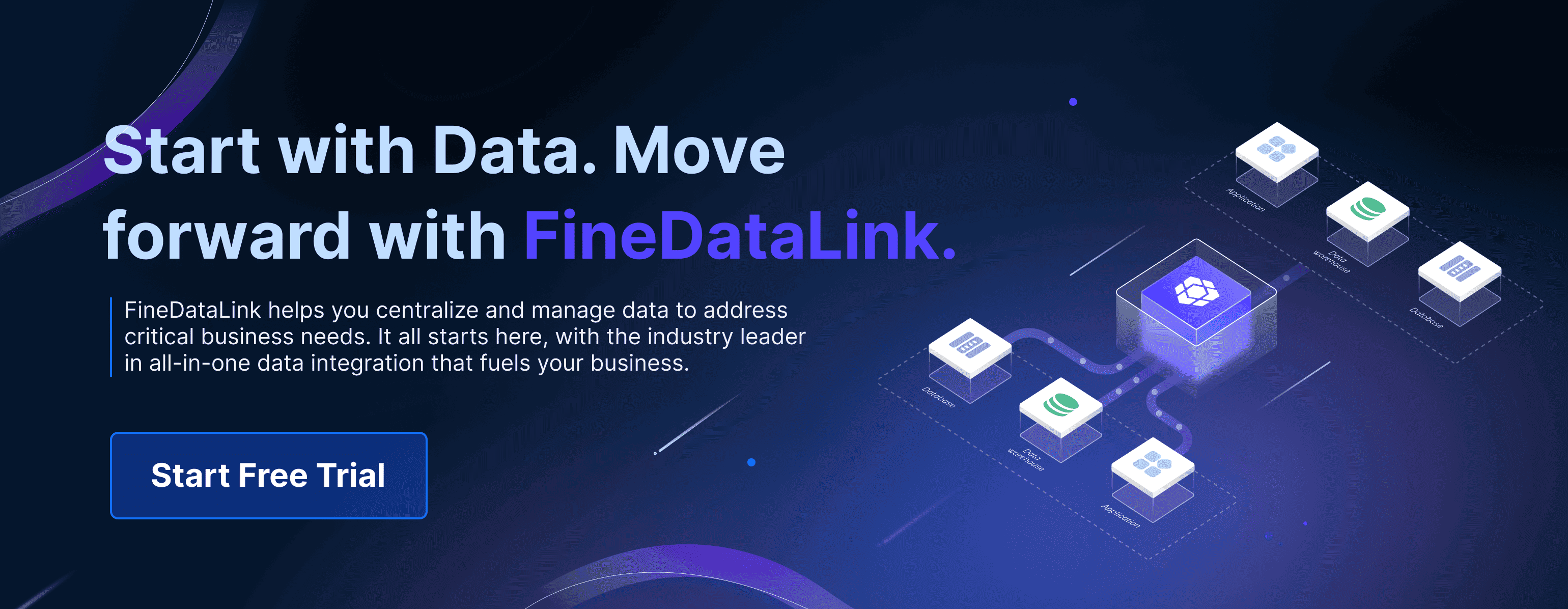You use an enterprise data model as a plan to organize your data. This model helps you make a strong base for handling information in your company. FanRuan gives you tools like FineReport and FineBI to look at and show data. FineDataLink lets you link to many data sources and make data better. The table shows how these tools help you use data every day.
| Feature | Description |
|---|---|
| Flexible Data Connections | You can link to many data sources for easy use. |
| Dynamic Reporting | You make and share clear reports and dashboards for good insights. |
| Enhanced Data Quality | You use ETL and ELT with FineDataLink to make data better. |
Enterprise Data Model Overview

Definition of Enterprise Data Model
An enterprise data model helps you organize company information. It works like a map for your data. The model shows how different data pieces connect. Everyone learns what each data piece means. People also learn how to use the data.
Here is how top experts explain the enterprise data model:
Think of the enterprise data model as a blueprint for your data. This blueprint shows how your data is set up. It uses a standard schema to link data elements. This setup helps your business work better. It also helps you make good decisions.
FanRuan is a leader in data analytics. FineDataLink lets you connect and manage data from many places. FineDataLink makes data integration easy and dependable. It helps you build strong data models.
Core Purpose of Enterprise Data Model
The main goal is to help you manage data well. You keep your data safe, correct, and simple to use. Teams can share and work together more easily.
Here are the main reasons big companies use enterprise data models:
| Objective | Description |
|---|---|
| Data Governance | Clear definition of policies for key data governance components, including standards for data quality, handling, and access. |
| Data Quality | Monitoring data to ensure it meets common standards, leading to a unified database and reduced operational chaos. |
| Data Integration | Integrating data from various sources into a single system to avoid errors and enhance productivity. |
| Data Security | Establishing strict policies to protect against data leaks, theft, and cyberattacks. |
| Compliance | Ensuring data protection and adherence to regulatory requirements through a well-designed EDM strategy. |
You also get these benefits with enterprise data models:
- You stop data from repeating.
- You make reporting easier by joining all your data.
- You keep your business running smoothly by organizing data.
In 2025, new trends will change data modeling. Companies want better data maturity and use platform engineering. They also use new technology like semantics in AI. Data contracts and strong governance are now more important. These changes help you get more from your data models. They also help your company stay ready for the future.
FanRuan and FineDataLink give you tools for these goals. FineDataLink helps you join data from many places. It keeps your data models fresh. Your data is always ready for analysis. This support helps you build a strong base for your business data.
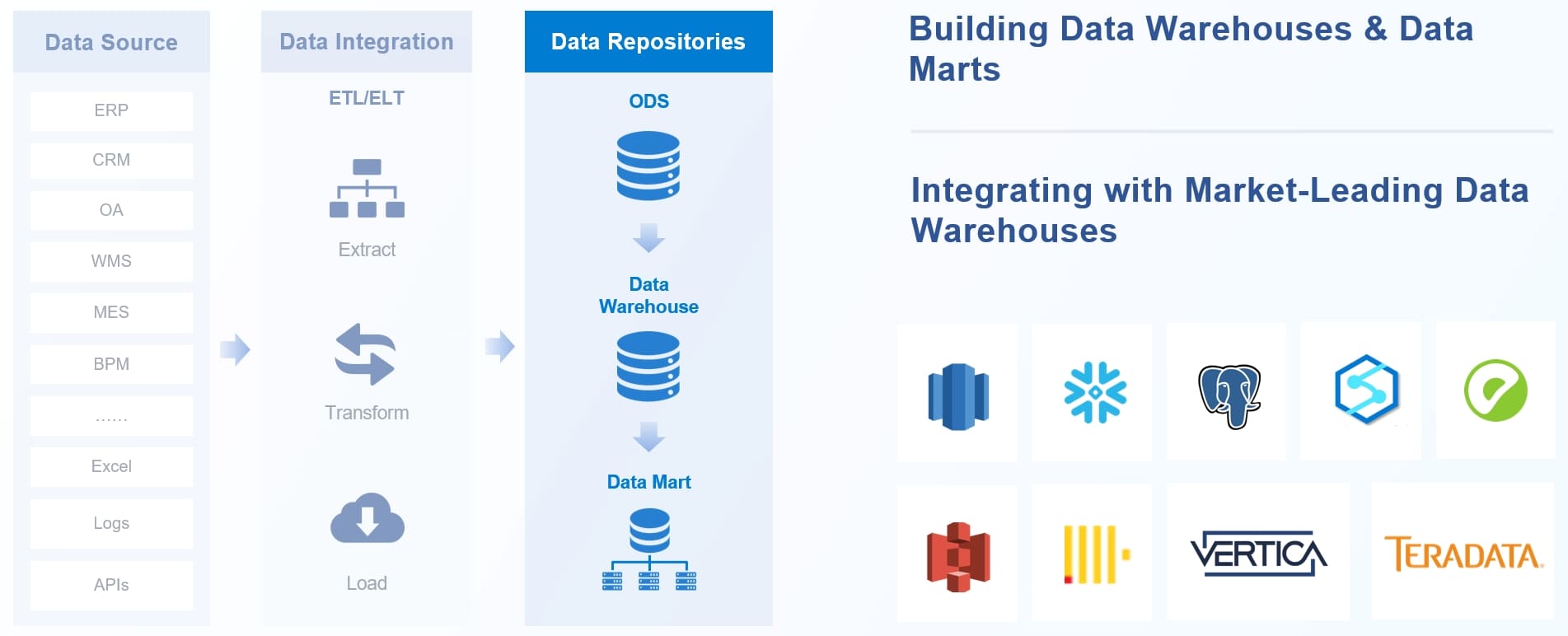
Enterprise Data Model Techniques
Conceptual, Logical, Physical Models
You use different ways to organize your data. Each way helps you look at data differently. First, you start with a conceptual model. This model shows big business ideas and how they connect. You use it to talk with business analysts. It helps you set rules for your data.
Next, you make a logical model. This model gives more details. It shows tables, fields, and links between data. It does not depend on any database system. You use the logical model to plan how your data will work. The entity relationship diagram is important here. It helps you see how data pieces fit together.
The last step is the physical model. This model shows how you store data in a real database. You add indexes and storage details. This makes your system fast and safe. Database administrators use the physical model to set up and manage data.
Here is a table to help you compare these models:
| Data Model Type | Purpose | Audience |
|---|---|---|
| Conceptual Model | Shows big business ideas and connections. | Business analysts |
| Logical Model | Gives details about data without database specifics. | Database designers/engineers |
| Physical Model | Explains how data is stored in a database. | Database administrators |
FineDataLink helps you with every step of data modeling. You can use real-time sync to keep data fresh. FineDataLink also has ETL and ELT tools. These help you move and clean your data. These features make your data modeling better.
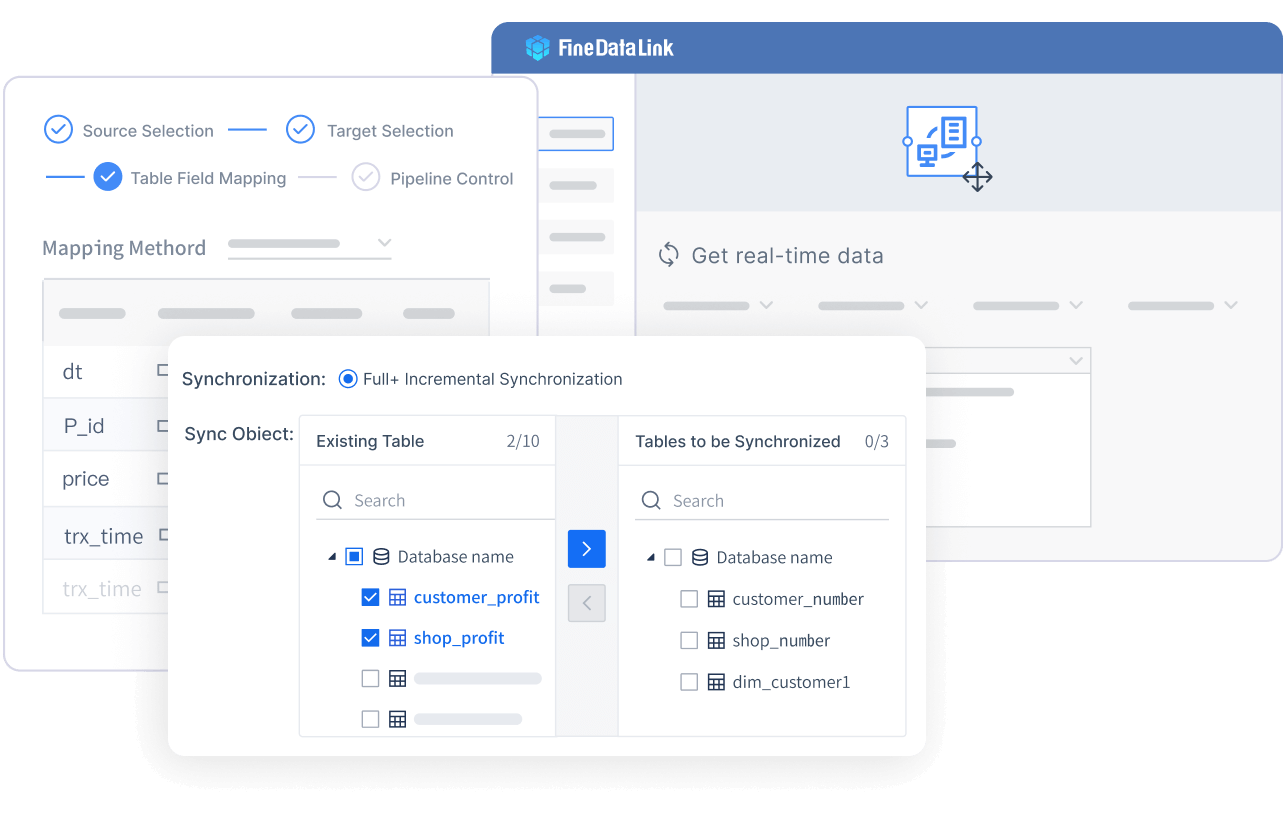
Enterprise Architect Data Modeling
Enterprise architect data modeling helps you build strong data systems. You use this way to match data with business goals. The process helps you set rules for data quality and integration. You manage data across many systems. You make sure your data is safe and useful.
You have many jobs in enterprise architect data modeling. You check your technology plans. You give advice on architecture and help your team. You make sure your data modeling follows best practices. You also create solution architecture. You work with leaders to meet business needs.
Here are some main responsibilities in enterprise architect data modeling:
- Match data plans with business goals.
- Make sure data is good and follows rules.
- Manage data joining across systems.
- Help your company use data as an asset.
- Write down standards and keep the process clear.
You often use an entity relationship diagram to show data links. FineDataLink helps you with enterprise architect data modeling. It gives you tools for real-time data joining and easy management. You can use its low-code platform to build and change data models fast. FineDataLink makes your data modeling smooth and reliable.
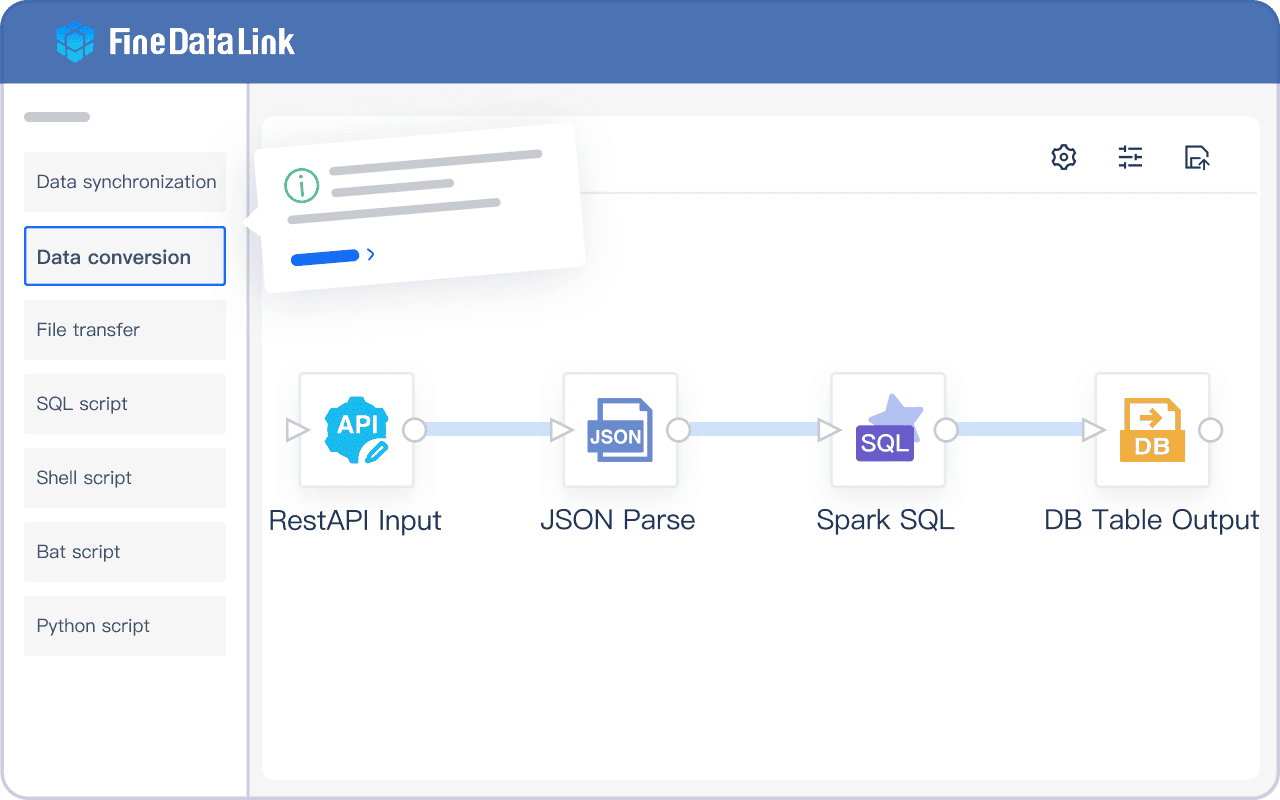
Tip: Use FineDataLink to automate your data modeling steps and keep your models current. This helps you react quickly to business changes and keeps your data ready for analysis.
Benefits of Enterprise Data Modeling
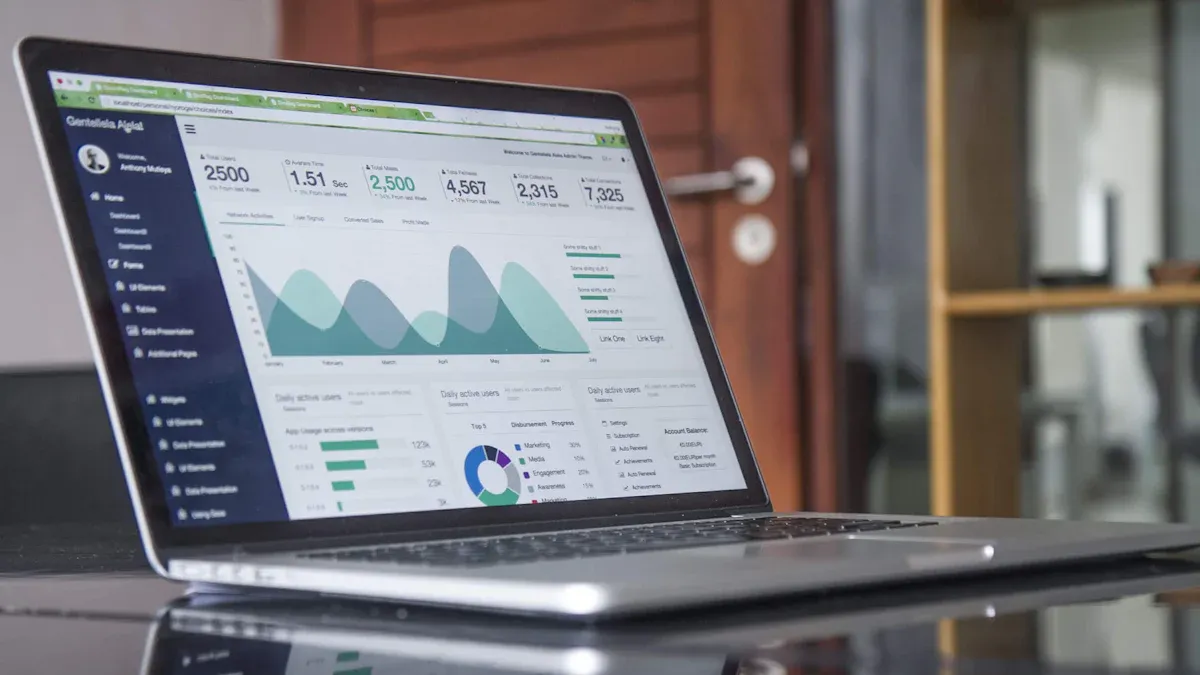
Data Consistency
You want your business to trust its data. Using an enterprise data model sets clear rules for handling information. Everyone in your company uses the same definitions and formats. This helps stop confusion and lowers mistakes.
You can check data consistency by looking at important numbers:
| Metric | Description |
|---|---|
| Query Performance | Shows how fast you get data. |
| Data Load Times | Tells how quickly data is ready to use. |
| Error Rates | Counts how often mistakes happen with data. |
| Data Completeness | Checks if all needed data is there. |
| Data Uniqueness | Makes sure data is not repeated. |
| Data Timeliness | Checks if data is current and useful. |
You can make rules like required fields, certain formats, and value limits. For example:
- Customer names must not be empty.
- Email addresses need an “@” symbol.
- Ordered quantities must be more than zero.
FanRuan and FineDataLink help keep your data consistent. FineDataLink checks and updates data automatically. You fix fewer mistakes and use better data. Automation saves time and keeps your data current everywhere.

Tip: Use FineDataLink’s real-time sync to keep your data the same in all places.
Data Governance
You need strong data governance to manage your information well. Data modeling gives your data a clear structure. You can track, control, and protect your information. This helps you follow rules and standards.
You can measure data governance with these numbers:
| Metric | Description |
|---|---|
| Number of activated data domains | Counts how many data areas you manage. |
| Number of certified data assets | Counts data that meets quality rules. |
| Number of activated domains cataloged | Shows how much important data you have listed. |
| Percentage of workforce with self-service enabled | Tells how many workers can get data themselves. |
| Number of data assets with data quality controls | Counts data with checks for accuracy. |
Enterprise data models help solve basic data problems. Your data matches real facts. Many tasks are automated, saving time and lowering mistakes. Teams can share and use data easily. You keep your data safe and correct.
FanRuan and FineDataLink help you reach your data governance goals. FineDataLink brings data together from different places. It breaks down barriers and keeps your data fresh. Real-time sync means your data is always ready to use. You get better control and can trust your business results.
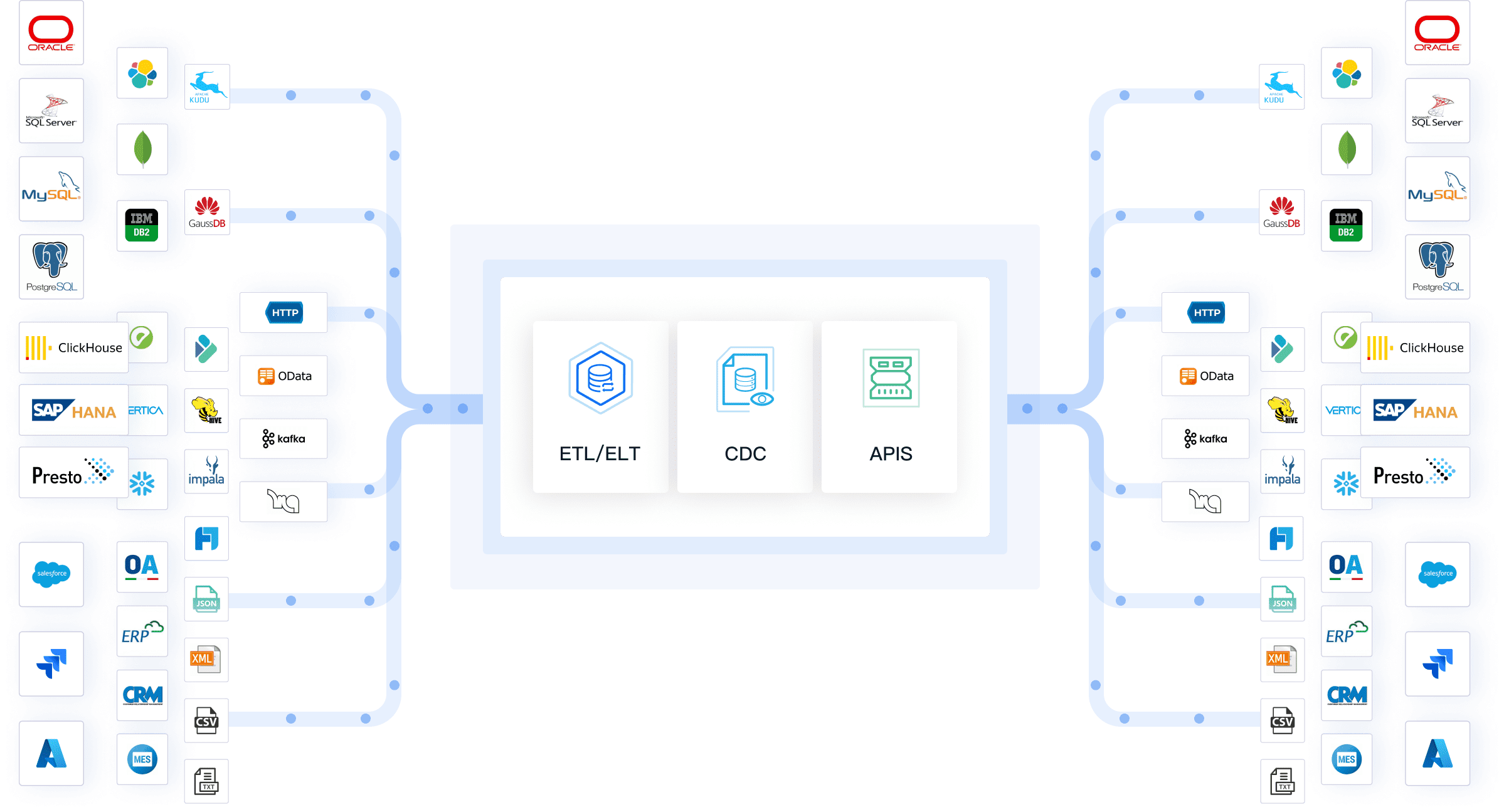
Business Agility
You want your business to move quickly and change easily. Data modeling gives you the power to respond fast. With a strong model, you can update systems and processes without starting over. You can add new data or change rules as your business grows.
Modern tools like FineDataLink help you work faster. You can work with your team at the same time. You can try new ideas and see results quickly. Cloud data modeling lets you change with the market and customer needs.
Here are ways data modeling helps you be agile:
- Teams work together in real time to decide faster.
- You can change your data model for new goals.
- Data analytics helps you find trends and react to risks.
- You use inside and outside data for better market knowledge.
FanRuan and FineDataLink give you tools to stay ahead. You can spot changes in the market and act fast. Your business becomes more flexible and strong.
Note: With FineDataLink, you can build and change your data models quickly, so your business is ready for anything.
Challenges and Solutions of Enterprise Data Model
Common Challenges
Building an enterprise data model is not easy. You face many problems. Most companies have data silos. Teams keep information in different systems. These systems do not share data. This causes gaps and mistakes in your records. You might see the same record more than once. It is hard to trust your reports.
Here are some problems you may have:
- It is hard to track consent in many places.
- You may not have full audit trails for data use.
- New laws can be hard to follow and slow to learn.
- Teams use different ways to handle data, which causes mistakes.
- Old data systems cannot update fast or meet new rules.
- You may find product codes that do not match and customer info that repeats.
- Many systems use different words for the same thing, so joining data is tough.
Many businesses have these problems too. The table shows how often these issues happen:
| Statistic | Source |
|---|---|
| 68% of people say data silos are their biggest worry | DATAVERSITY |
| 20% of money lost because of bad operations and wrong choices | DATAVERSITY |
| 90% of companies have some kind of data silo | Forbes |
| 60% say data silos hurt their decisions | Gartner |
| 80% think joined data is needed for AI | McKinsey |
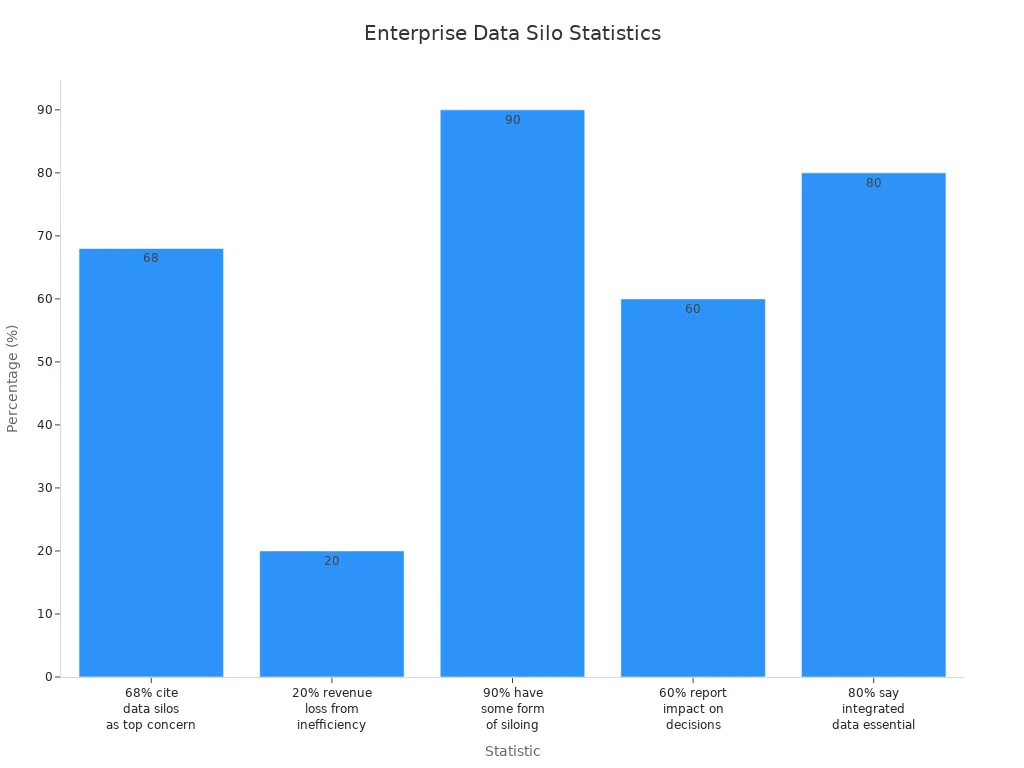
FineDataLink Solutions
You can fix these problems with good tools. FineDataLink helps you manage your data in a new way. It lets you connect, clean, and move data in all your systems.
FineDataLink gives you these helpful features:
- Real-time sync keeps your data correct and new.
- The low-code platform lets you automate ETL jobs and makes fewer mistakes.
- You can link to over 100 data sources, both cloud and local.
- The easy interface helps you set up and run data pipelines.
- You can make APIs without coding, so sharing data is fast.
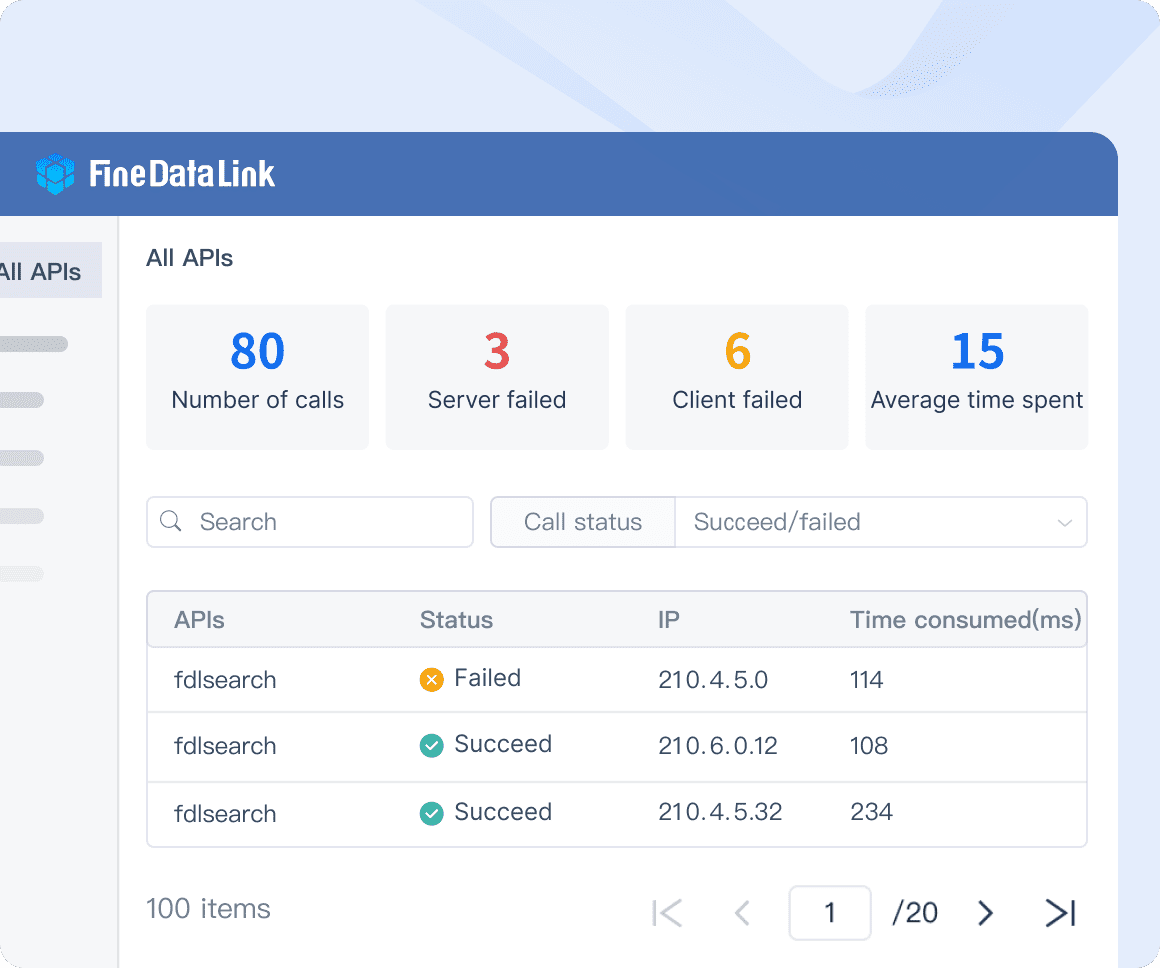
| Feature | Description |
|---|---|
| Data Pipeline | Supports real-time data synchronization |
| Clustered Environment | Enhances performance and availability |
FineDataLink helps you get rid of data silos and makes your data storage the same everywhere. You can match business words and meanings for all teams. You can also change your model as your business grows. With FineDataLink, you fix fewer mistakes and use your data to learn more.
Tip: Use FineDataLink to automate joining your data. This keeps your enterprise data model ready for any business need.
Best Practices for Enterprise Data Model Implementation
Building and Scaling
You want your enterprise data model to grow with your company. Start by making your model ready for changes. Business needs will change over time. Build your model so you can add new data types later. You might need to support things like different currencies. This helps your system get ready to grow.
Use layers in your data system. Keep each part of your data system separate. This lets you fix or grow one part without changing the rest. Cloud-native tools help you grow or shrink as needed. You only pay for what you use. You can grow fast when your company grows.
Split big sets of data into smaller parts. This is called data partitioning. It helps your system work faster and makes it easier to handle. You can also check your progress by setting clear goals. Use key performance indicators (KPIs) to see how well your data model works.
Tip: Always be ready for change. A flexible model saves you time and money later.
Here is a table showing how companies check their progress as they grow their data model:
| Maturity Level | Key Performance Indicators (KPIs) | Outcomes |
|---|---|---|
| Level 1 | Basic data management practices | Limited insights |
| Level 2 | Improved data governance | Better data quality |
| Level 3 | Defined KPIs for data projects | Enhanced decision-making |
| Level 4 | Regular tracking of ROI | Increased operational efficiency |
| Level 5 | Comprehensive data management | Optimized data utilization |
Integration Across Systems
You need your data model to work with many business systems. Start by using automation to move and clean your data. This cuts down on mistakes and saves time. Make your data formats the same so you can join data from different places. Check your data quality often to find problems early.
No-code or low-code tools help everyone on your team use data. Even people who are not tech experts can help. FineDataLink makes this easier. You can use its scheduled task module to move data between systems. The platform lets you pick from many scheduling options. If something goes wrong, FineDataLink keeps your data safe with fault tolerance.
Note: With FineDataLink, you can connect to over 100 data sources and manage your data with a simple drag-and-drop tool.
Here is a table of ways to join your data model across systems:
| Strategy | Description |
|---|---|
| Data automation | Reduces manual work and increases efficiency |
| Manage disparate sources | Converts different data types into a standard format |
| Enable data monitoring | Checks data quality and finds issues early |
| Promote no-code integration | Lets non-technical users manage data easily |
When you use these best practices, your enterprise data model will stay strong and flexible. You will be ready for new business problems and can use your data to make better choices.
You must have a good way to handle your data. This is important for your company’s future. The table below explains why:
| Key Benefit | Description |
|---|---|
| Standardization and Consistency | Makes sure your data stays the same and correct |
| Data Quality and Integrity | Lets you trust your data when making choices |
| Enhancing Data Accessibility | Helps everyone find and use data easily |
FanRuan and FineDataLink let you link, study, and share your data. You get tools to see data right away and join it smoothly. New solutions help you follow rules, move fast, and let teams work together with trust.
Continue Reading About Enterprise Data Model
Comparing the Best Enterprise Data Integration Platforms
Enterprise data warehouse explained and why it matters
A Guide to Enterprise Data Security Best Practices
What You Need to Know About Enterprise Data Protection in 2025
FAQ

The Author
Howard
Data Management Engineer & Data Research Expert at FanRuan
Related Articles

12 Best Data Observability Tools to Watch in 2025
Top 12 best data observability tools for 2025 with key features to boost data quality, reliability, and integration for modern data-driven teams.
Howard
Nov 28, 2025

Top 10 Data Quality Monitoring Tools You Should Know in 2025
Compare the top 10 data quality monitoring tools for 2025 to find solutions with advanced features, real-time monitoring, and seamless integration.
Howard
Nov 27, 2025

Top 10 Vendors Leading Modern Data Platforms in 2025
See the top 10 vendors shaping modern data platform solutions in 2025, with insights on innovation, scalability, integration, and enterprise adoption.
Lewis
Nov 27, 2025
